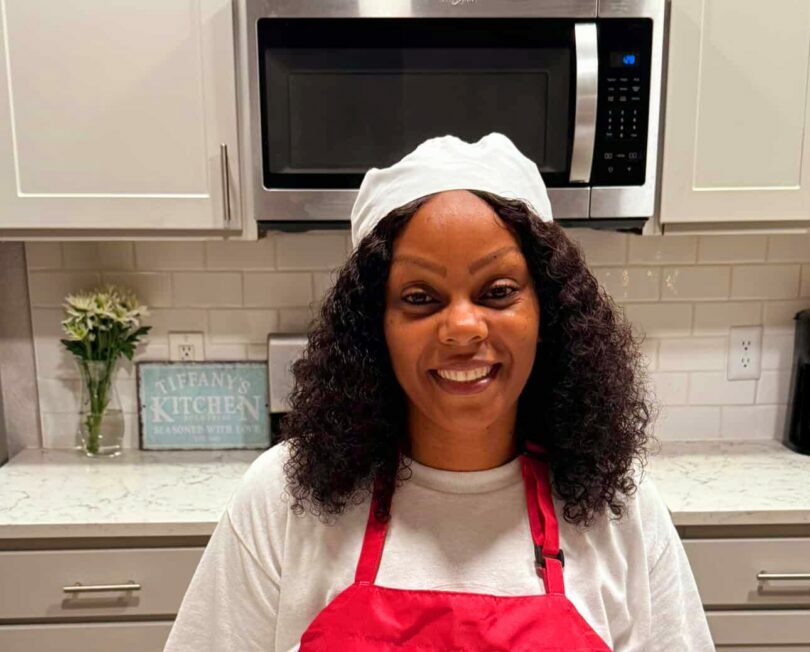We caught up with the brilliant and insightful Tian Yong a few weeks ago and have shared our conversation below.
Tian, thank you so much for taking the time to share your lessons learned with us and we’re sure your wisdom will help many. So, one question that comes up often and that we’re hoping you can shed some light on is keeping creativity alive over long stretches – how do you keep your creativity alive?
I believe that as a head chef and a team leader, it is crucial to maintain a certain vitality. This energy is essential for the team to thrive. Constantly experimenting with new flavors, continually elevating signature dishes and specialties, refining presentation styles and the use of tableware, keeping abreast of trending culinary information, emulating and refining the production process in one’s way—these are like a series of unsolvable problems. The most gratifying moments come from the recognition and support of family, colleagues, friends, and customers. It’s akin to the refreshing feeling after a workout, looking in the mirror after shaving, using mint-scented shampoo after a haircut, changing into a new work uniform every day, and many other examples. In essence, it’s about portraying a certain spirit and attitude.
Great, so let’s take a few minutes and cover your story. What should folks know about you and what you do?
My work mainly consists of planning and daily tasks. Planning involves yearly, quarterly, and weekly plans. Yearly plans include adjustments to the main menu based on the previous year’s summary. We utilize an elimination system, adjusting or replacing items with poor sales. Plans also encompass promoting holiday dishes, brand campaigns, tableware updates, equipment maintenance, staff assessment for growth paths, and rotation plans.
Quarterly plans involve crafting seasonal menus for different occasions and meeting specific requests for special occasions like weddings, birthdays, or banquets. It also involves product development, taste tests, photography, translation, layout, proofreading, printing, and inviting regular customers to try new dishes. Simultaneously, it includes staff training, revising dish standards to ensure consistent quality upon serving.
Regular visits to famous farmers’ markets or wholesale markets to explore new food ingredients are part of our routine. Daily tasks are busy yet fulfilling. It starts with checking the latest reservation information, arranging work schedules during meetings, monitoring staff attendance, adjusting work positions promptly, and inspecting stalls’ preparations. It also includes checking pre-dinner preparations, stock levels, taste of sauces, freshness of ingredients, refrigerator temperatures, quality and quantity of daily purchases, and considering urgent self-purchases when necessary.
Moreover, it involves checking live seafood, supervising service coordination, dish presentation, staff focus, banquet dish order, and attending to special requests from guests. Some special dishes require personal presentation to guests. Whenever possible, I visit the dining area to greet and assess guest satisfaction. After the last call, departments maintain cleanliness, check storage compliance, adjust department orders according to actual sales, and ensure cleanliness and equipment safety before closing.
My primary responsibilities are overseeing kitchen dish production, staff coordination, ensuring quality of purchases, menu arrangement, controlling various departments’ food processing, preparation, storage, and quantities. Additionally, I schedule short breaks for staff, supervise hygiene, manage guest reservations, accommodate special guests with different menus, and personally procure some fresh ingredients.
During service, I allocate time to greet guests, inquire about their dining experiences, and explain dishes to new customers. Our restaurant’s cooking methods are derived from the proprietor’s Manchu heritage, specifically from the Nara family, differentiating us from other places. Next year, we plan to collaborate with Michelin-starred chefs for charity dinners and engage in mutual exchanges with other chefs. I believe cuisine knows no boundaries; sharing good food and cooking methods helps spread Chinese cuisine to more people.
Our menu is layered: standard menu items, seasonal dishes, pre-booked boutique banquet menus, and lunch sets tailored for 2-4 people, providing quick service.
Currently, there are no plans to open new branches for our small restaurant due to challenging site selection. Our expansion plans heavily influence our decision-making process, so there are no immediate plans to open new outlets.
If you had to pick three qualities that are most important to develop, which three would you say matter most?
The restaurant has been open for seven years, experiencing various phases that constantly adjusted dish requirements. Initially, the menu comprised a combination of specialty dishes found across Beijing’s restaurants, emphasizing dishes prepared by burning, stewing, braising, simmering, frying, sautéing, and cooking. Over time, certain dishes, due to complex preparation, were removed.
After a year, observations revealed that dishes were predominantly red, bright, or dark in color, making room arrangements unappealing. Consequently, adjustments favored vibrant and milder-colored dishes. Upon receiving the Michelin honor, new dishes were added. Presently, the focus lies in seasonal dishes to gradually form another system.
While chef videos appear relaxed and enjoyable, working in a kitchen demands intense dedication. Wearing the work uniform signifies serious commitment due to the inherent dangers. On my first day, my mentor emphasized two critical aspects: food safety and operational safety. The taste is a matter of skill, but these two aspects are about fundamental qualities and professional standards.
The most thrilling moment was receiving the Michelin recognition, acknowledging not just my work but the entire restaurant and team—a significant accomplishment for a traditional Chinese restaurant. It’s challenging, akin to a game where 20 people tie their left foot to their companion’s right to run together. Each person’s position matters, and any misstep affects everyone. It’s about maintaining a rhythmic pace while running, ensuring coordination among team members. Individual excellence is vital, yet teamwork and system adherence are paramount. We invested significant time and effort in dish training to enhance overall coordination.
Okay, so before we go, is there anyone you’d like to shoutout for the role they’ve played in helping you develop the essential skills or overcome challenges along the way?
I feel it’s the trust the boss places in me, providing ample space, and offering guidance in various stages that allows for suggestions and directions. We brainstorm and discuss dishes together, sharing our respective ideas. Also, working with our General manager Carol, she’s meticulous and dedicated in her work. I believe it’s the collaborative teamwork and mutual trust that have brought us this far today.
Contact Info:
- Website: https://www.bistronas.com/
- Instagram: https://www.instagram.com/bistronasus/
- Facebook: https://www.facebook.com/bistronasus/
- Yelp: https://www.yelp.com/biz/bistro-nas-temple-city-10?start=20












